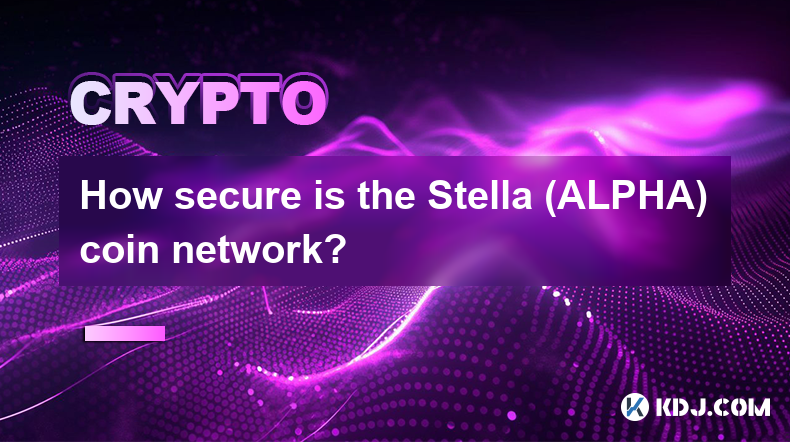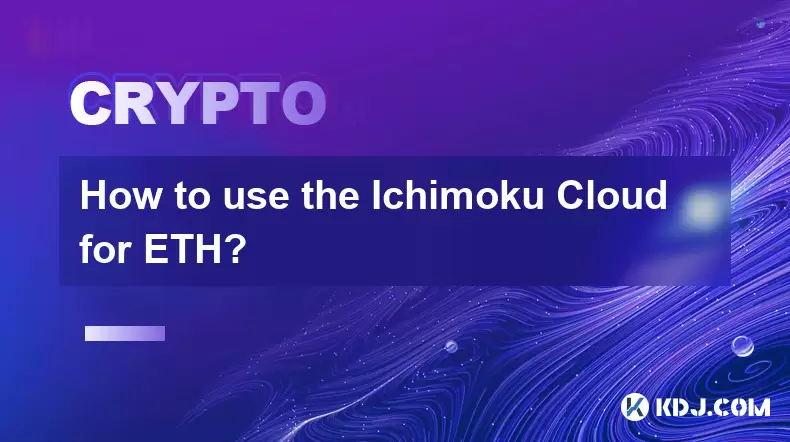-
 Bitcoin
Bitcoin $117400
-0.46% -
 Ethereum
Ethereum $3768
0.60% -
 XRP
XRP $3.551
2.09% -
 Tether USDt
Tether USDt $1.000
0.00% -
 Solana
Solana $203.2
11.30% -
 BNB
BNB $770.9
1.92% -
 USDC
USDC $0.9999
0.01% -
 Dogecoin
Dogecoin $0.2709
-0.02% -
 Cardano
Cardano $0.9024
4.49% -
 TRON
TRON $0.3139
0.60% -
 Hyperliquid
Hyperliquid $45.60
-1.41% -
 Stellar
Stellar $0.4730
-1.34% -
 Sui
Sui $4.025
2.15% -
 Chainlink
Chainlink $19.79
2.19% -
 Hedera
Hedera $0.2724
-2.39% -
 Avalanche
Avalanche $25.93
3.05% -
 Bitcoin Cash
Bitcoin Cash $524.0
-1.83% -
 Shiba Inu
Shiba Inu $0.00001558
0.50% -
 Litecoin
Litecoin $116.7
-0.30% -
 UNUS SED LEO
UNUS SED LEO $8.996
0.00% -
 Toncoin
Toncoin $3.334
1.83% -
 Polkadot
Polkadot $4.506
0.34% -
 Uniswap
Uniswap $10.99
4.83% -
 Ethena USDe
Ethena USDe $1.001
0.03% -
 Pepe
Pepe $0.00001461
3.17% -
 Monero
Monero $320.3
-1.01% -
 Bitget Token
Bitget Token $4.935
0.36% -
 Dai
Dai $0.9998
0.00% -
 Aave
Aave $322.4
-1.25% -
 Bittensor
Bittensor $455.6
9.33%
How secure is the Stella (ALPHA) coin network?
The ALPHA network's security relies on advanced measures like Proof-of-Authority consensus, cryptographic hashing, encryption, auditing, and ongoing monitoring to safeguard digital transactions and protect data integrity.
Dec 28, 2024 at 03:41 am

Key Points:
- Understanding the Stella (ALPHA) Network Architecture
- Security Measures Implemented in the ALPHA Protocol
- Factors Contributing to the Robustness of the ALPHA Network
- Vulnerabilities and Potential Risks Associated with the ALPHA Network
- User Responsibilities for Maintaining Network Security
Understanding the Stella (ALPHA) Network Architecture
Stella (ALPHA) is a decentralized blockchain network designed to facilitate secure and efficient digital transactions. The network employs a layered architecture with multiple mechanisms working together to ensure its security. At the core is a distributed ledger, which contains a tamper-proof record of all transactions. The ledger is maintained by a network of nodes, each operating independently and verifying the validity of transactions before adding them to the chain.
Security Measures Implemented in the ALPHA Protocol
To protect the integrity of the ALPHA network, the protocol incorporates several advanced security measures:
- Proof-of-Authority Consensus Mechanism: ALPHA utilizes a Proof-of-Authority (PoA) consensus mechanism, where a limited number of validators, known as authorities, are responsible for verifying and adding transactions to the ledger. This reduces the risk of malicious actors manipulating the network and ensures transaction finality.
- Cryptographic Hash Functions: All transactions on the ALPHA network are secured using cryptographic hash functions, such as SHA-256. These functions create a unique and irreversible fingerprint for each transaction, making it virtually impossible to tamper with or alter recorded data.
- Encryption and Decryption: Data transmitted over the ALPHA network is encrypted using industry-standard encryption algorithms, such as AES-256. This encryption protects sensitive information, such as transaction details and user identities, from unauthorized access.
- Auditing and Monitoring: The ALPHA network is constantly monitored and audited by a team of security experts to identify and address potential vulnerabilities. This proactive approach helps to maintain the integrity and reliability of the network.
Factors Contributing to the Robustness of the ALPHA Network
In addition to the implemented security measures, several factors contribute to the overall robustness of the ALPHA network:
- Distributed Network Architecture: The decentralized nature of the ALPHA network makes it resilient to single points of failure. If one node experiences an issue, the network can continue to function without interruption, ensuring transaction processing and network availability.
- Transparency and Traceability: All transactions on the ALPHA network are recorded on a public ledger, providing transparency and traceability. This helps to prevent fraud and malicious activities, as every transaction can be tracked and verified.
- Community Engagement and Collaboration: The ALPHA community actively participates in securing the network, identifying potential vulnerabilities, and proposing improvements. This collaborative approach strengthens the network's defenses and fosters a sense of shared responsibility.
Vulnerabilities and Potential Risks Associated with the ALPHA Network
Despite the robust security measures and design, the ALPHA network, like any other blockchain network, is not immune to vulnerabilities and potential risks:
- Smart Contract Exploits: The ALPHA network supports smart contracts, which are autonomous programs that execute on the blockchain. While smart contracts offer many benefits, they can also introduce vulnerabilities if not developed and audited carefully.
- Phishing and Social Engineering Attacks: Malicious actors may attempt to trick users into sharing their private keys or sensitive information through phishing emails or social engineering techniques.
- Quantum Computing Threat: The advancement of quantum computing poses a potential threat to blockchain networks, including ALPHA. Quantum computers may be able to break current encryption algorithms and compromise the security of the network.
- Network Congestion and DDoS Attacks: If the ALPHA network experiences high transaction volume or is targeted by a DDoS attack, it could lead to network congestion and disruption of services.
User Responsibilities for Maintaining Network Security
While the ALPHA network incorporates robust security measures, user responsibilities are equally crucial for maintaining its security:
- Secure Key Management: Users should store their private keys securely, ideally in a hardware wallet or cold storage device, to prevent unauthorized access.
- Avoiding Phishing and Social Engineering Attacks: Users should remain vigilant against phishing attacks and never share their private keys or sensitive information.
- Software Updates: Keeping the ALPHA wallet and node software up to date is essential for addressing potential vulnerabilities and maintaining network security.
- Reporting Suspicious Activity: Users should report any suspicious activity or potential vulnerabilities they encounter on the ALPHA network to the development team for prompt investigation.
FAQs Related to Stella (ALPHA) Coin Network Security
- Q1: Is the ALPHA network secure?
- A1: Yes, the ALPHA network employs multiple advanced security measures and design principles to ensure the integrity and robustness of the network. However, like any blockchain network, it is not immune to vulnerabilities and potential risks.
- Q2: What security measures are implemented in the ALPHA protocol?
- A2: ALPHA utilizes a Proof-of-Authority consensus mechanism, cryptographic hash functions, encryption and decryption algorithms, and continuous auditing and monitoring by security experts.
- Q3: Can the ALPHA network be compromised by quantum computing?
- A3: The advancement of quantum computing poses a potential threat to the ALPHA network, as with other blockchain networks. However, the development team is actively monitoring the situation and exploring possible solutions to mitigate this risk.
- Q4: What are the user responsibilities for maintaining network security?
- A4: Users should practice secure key management, avoid phishing and social engineering attacks, keep their software up to date, and report any suspicious activity to the development team.
- Q5: What can I do to protect myself from security risks on the ALPHA network?
- A5: Store your private keys securely, remain vigilant against phishing and social engineering attacks, keep the ALPHA wallet and node software updated, and report any suspicious activity promptly.
Disclaimer:info@kdj.com
The information provided is not trading advice. kdj.com does not assume any responsibility for any investments made based on the information provided in this article. Cryptocurrencies are highly volatile and it is highly recommended that you invest with caution after thorough research!
If you believe that the content used on this website infringes your copyright, please contact us immediately (info@kdj.com) and we will delete it promptly.
- XRP, Bitcoin, Ripplecoin: Navigating the Crypto Landscape in 2025
- 2025-07-22 20:30:13
- Cardano Ecosystem Watch: Can PayFi Token Remittix Trigger an ADA Overtake?
- 2025-07-22 20:50:13
- JasmyCoin Price Forecast: Chart Analysis Points to Potential Surge
- 2025-07-22 20:55:13
- Trump, Bitcoin, and Altcoins: A New York Minute on Crypto's Political Play
- 2025-07-22 21:00:13
- Shiba Inu, XRP, and Little Pepe: Navigating the Meme Coin Mania in NYC
- 2025-07-22 21:30:13
- Bitcoin's Role in IntelBroker's Takedown: A New Era of Crypto Crime Enforcement
- 2025-07-22 21:10:15
Related knowledge

What is Chainlink (LINK)?
Jul 22,2025 at 02:14am
Understanding Chainlink (LINK): The Decentralized Oracle NetworkChainlink is a decentralized oracle network designed to bridge the gap between blockch...

What is Avalanche (AVAX)?
Jul 22,2025 at 08:35am
What is Avalanche (AVAX)?Avalanche (AVAX) is a decentralized, open-source blockchain platform designed to support high-performance decentralized appli...

What is Polkadot (DOT)?
Jul 19,2025 at 06:35pm
Understanding the Basics of Polkadot (DOT)Polkadot (DOT) is a multi-chain network protocol designed to enable different blockchains to transfer messag...

What is Monero (XMR)?
Jul 21,2025 at 10:07am
What is Monero (XMR)?Monero (XMR) is a decentralized cryptocurrency designed to provide enhanced privacy and anonymity for its users. Unlike Bitcoin a...

How to add indicators to Ethereum chart on TradingView?
Jul 19,2025 at 07:15am
What Is an Ethereum Chart on TradingView?The Ethereum chart on TradingView is a visual representation of the price movement of Ethereum (ETH) over a s...

How to use the Ichimoku Cloud for ETH?
Jul 18,2025 at 09:56pm
Understanding the Ichimoku Cloud and Its ComponentsThe Ichimoku Cloud, also known as Ichimoku Kinko Hyo, is a versatile technical analysis tool that p...

What is Chainlink (LINK)?
Jul 22,2025 at 02:14am
Understanding Chainlink (LINK): The Decentralized Oracle NetworkChainlink is a decentralized oracle network designed to bridge the gap between blockch...

What is Avalanche (AVAX)?
Jul 22,2025 at 08:35am
What is Avalanche (AVAX)?Avalanche (AVAX) is a decentralized, open-source blockchain platform designed to support high-performance decentralized appli...

What is Polkadot (DOT)?
Jul 19,2025 at 06:35pm
Understanding the Basics of Polkadot (DOT)Polkadot (DOT) is a multi-chain network protocol designed to enable different blockchains to transfer messag...

What is Monero (XMR)?
Jul 21,2025 at 10:07am
What is Monero (XMR)?Monero (XMR) is a decentralized cryptocurrency designed to provide enhanced privacy and anonymity for its users. Unlike Bitcoin a...

How to add indicators to Ethereum chart on TradingView?
Jul 19,2025 at 07:15am
What Is an Ethereum Chart on TradingView?The Ethereum chart on TradingView is a visual representation of the price movement of Ethereum (ETH) over a s...

How to use the Ichimoku Cloud for ETH?
Jul 18,2025 at 09:56pm
Understanding the Ichimoku Cloud and Its ComponentsThe Ichimoku Cloud, also known as Ichimoku Kinko Hyo, is a versatile technical analysis tool that p...
See all articles

























































































